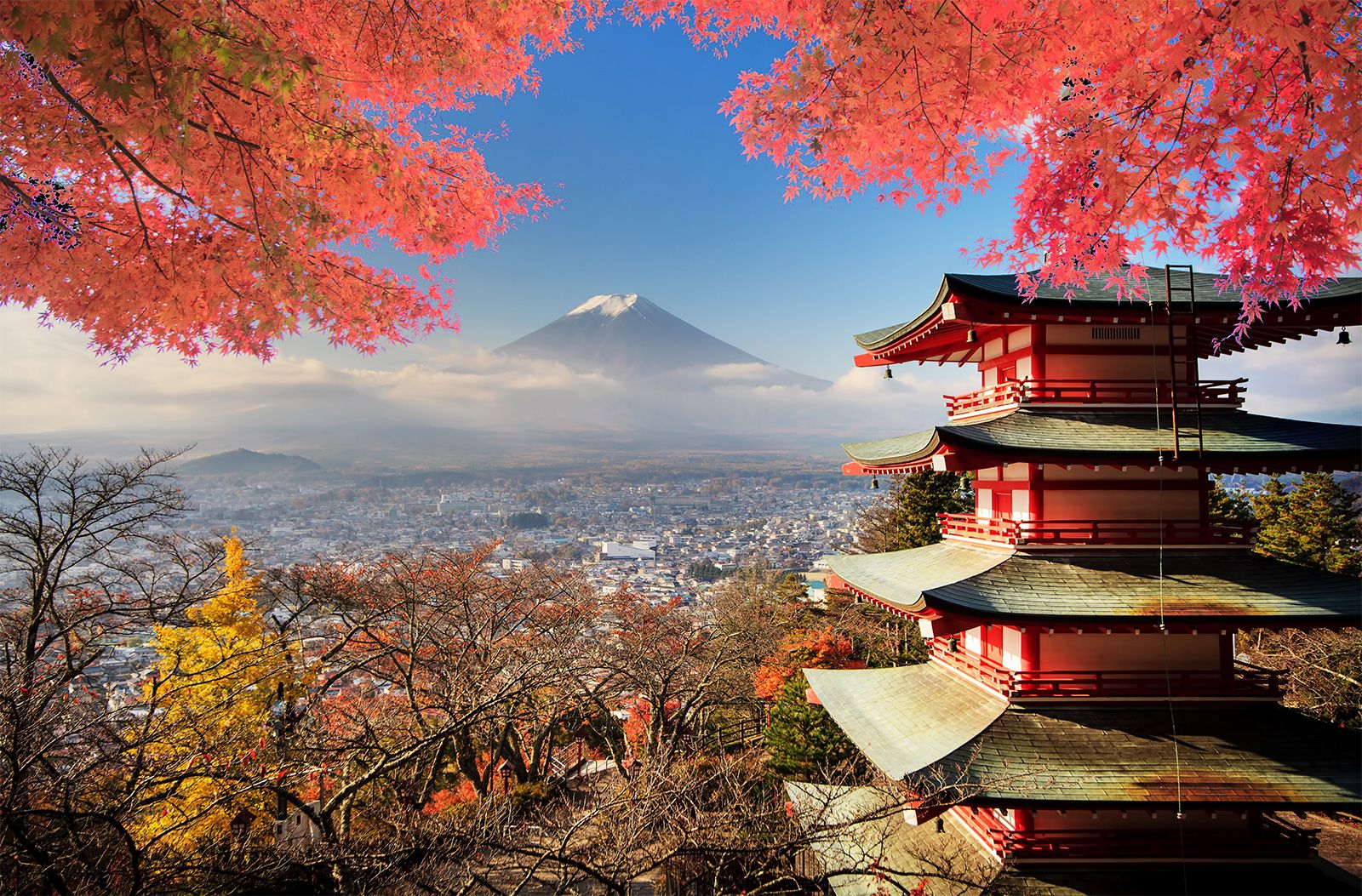Introduction :
Planning a trip to Japan? From the bustling streets of Tokyo to the serene temples of Kyoto, Japan offers a wealth of unforgettable destinations. In this comprehensive guide, we’ll take you through the best places to visit in Japan, ensuring your travel checklist is complete. Whether you’re drawn to the modern marvels of Osaka or the historical charm of Hiroshima, we’ll provide detailed insights on each destination and how to reach them, making your journey through Japan seamless and memorable.

Certainly! Here’s a suggested table of contents for your article titled “Best Places to Visit in Japan: Your Complete Travel Checklist”:
- Introduction
- Overview of Japan as a travel destination
- Importance of planning and a complete travel checklist
- Chapter 1: Tokyo
- Introduction to Tokyo
- Must-visit attractions in Tokyo
- How to reach Tokyo: Transportation options
- Chapter 2: Kyoto
- Introduction to Kyoto
- Must-visit attractions in Kyoto
- How to reach Kyoto: Transportation options
- Chapter 3: Osaka
- Introduction to Osaka
- Must-visit attractions in Osaka
- How to reach Osaka: Transportation options
- Chapter 4: Hiroshima
- Introduction to Hiroshima
- Must-visit attractions in Hiroshima
- How to reach Hiroshima: Transportation options
- Chapter 5: Nara
- Introduction to Nara
- Must-visit attractions in Nara
- How to reach Nara: Transportation options
- Chapter 6: Sapporo
- Introduction to Sapporo
- Must-visit attractions in Sapporo
- How to reach Sapporo: Transportation options
- Chapter 7: Kanazawa
- Introduction to Kanazawa
- Must-visit attractions in Kanazawa
- How to reach Kanazawa: Transportation options
- Chapter 8: Fukuoka
- Introduction to Fukuoka
- Must-visit attractions in Fukuoka
- How to reach Fukuoka: Transportation options
- Chapter 9: Okinawa Islands
- Introduction to Okinawa Islands
- Must-visit attractions in Okinawa Islands
- How to reach Okinawa Islands: Transportation options
- Conclusion
- Recap of the best places to visit in Japan
- Final tips for travelers
- Closing remarks on experiencing Japan’s diversity
Each chapter should provide detailed information on the destination, including top attractions, cultural insights, and practical advice on transportation options to help readers plan their trip effectively.
Certainly! Here’s the detailed process for each chapter of the article titled “Best Places to Visit in Japan: Your Complete Travel Checklist and How to Reach There – A Detailed Overview”:
Introduction
Japan, with its blend of ancient traditions and cutting-edge modernity, stands as a top destination for travelers worldwide. Planning a trip to Japan involves exploring a diverse array of attractions, from bustling metropolises to serene historical sites. This comprehensive guide aims to highlight the best places to visit in Japan, ensuring your travel checklist is complete. Each destination is paired with practical advice on how to reach there, utilizing Japan’s efficient transportation network to make your journey seamless and memorable.
Chapter 1: Tokyo
Introduction to Tokyo
Tokyo, Japan’s vibrant capital, is a city where the past and future collide. Skyscrapers tower over historic temples, and bustling neighborhoods hum with energy day and night.
Must-visit attractions in Tokyo
- Shibuya Crossing: The world’s busiest pedestrian crossing, a symbol of Tokyo’s bustling energy.
- Senso-ji Temple: Tokyo’s oldest temple, located in the historic Asakusa district.
- Tokyo Tower: An iconic landmark offering panoramic views of the city skyline.
- Meiji Shrine: A serene Shinto shrine nestled in a forested area near Harajuku.
- Imperial Palace: The residence of Japan’s Emperor, surrounded by beautiful gardens.
How to reach Tokyo
- Narita International Airport: Located east of Tokyo, serving international flights.
- Haneda Airport: Located closer to central Tokyo, serving both domestic and international flights.
- Shinkansen: High-speed trains connect Tokyo with major cities like Kyoto, Osaka, and Hiroshima.
Chapter 2: Kyoto
Introduction to Kyoto
Kyoto, Japan’s cultural heart, preserves centuries of history and tradition. It’s renowned for its temples, gardens, and traditional wooden houses.
Must-visit attractions in Kyoto
- Kinkaku-ji (Golden Pavilion): A stunning Zen temple covered in gold leaf.
- Fushimi Inari Taisha: Famous for its thousands of vermillion torii gates.
- Arashiyama Bamboo Grove: A tranquil bamboo forest with walking paths.
- Kiyomizu-dera Temple: Known for its wooden stage overlooking Kyoto.
- Gion District: Kyoto’s famous geisha district, known for its traditional tea houses.
How to reach Kyoto
- Kyoto Station: A major transportation hub with Shinkansen services from Tokyo, Osaka, and other cities.
- Shinkansen: Bullet trains offer fast and efficient travel to Kyoto from Tokyo (approximately 2 hours) and Osaka (approximately 15-30 minutes).
Chapter 3: Osaka
Introduction to Osaka
Osaka is known for its food, nightlife, and modern architecture. It’s a city where visitors can eat, shop, and explore cultural attractions with equal fervor.
Must-visit attractions in Osaka
- Osaka Castle: A symbol of the city’s samurai heritage and an impressive structure surrounded by a moat and park.
- Dotonbori District: Famous for its neon lights, street food, and entertainment options.
- Universal Studios Japan: A theme park offering attractions based on popular movies and TV shows.
- Osaka Aquarium Kaiyukan: One of Japan’s largest aquariums, showcasing marine life from around the world.
- Shinsekai District: Known for its nostalgic atmosphere and iconic Tsutenkaku Tower.
How to reach Osaka
- Kansai International Airport: Osaka’s main international gateway, located on an artificial island in Osaka Bay.
- Osaka Station: The city’s main railway station, offering Shinkansen services to Tokyo, Kyoto, and other cities.
- Shinkansen: Connects Osaka with Tokyo (approximately 2.5 hours) and Kyoto (approximately 15-30 minutes).
Chapter 4: Hiroshima
Introduction to Hiroshima
Hiroshima, a city with a tragic past and vibrant present, serves as a poignant reminder of the consequences of war and the enduring spirit of resilience.
Must-visit attractions in Hiroshima
- Peace Memorial Park and Museum: Commemorates the victims of the atomic bombing and promotes peace.
- Hiroshima Castle: A reconstructed castle with a history dating back to the 16th century.
- Miyajima Island and Itsukushima Shrine: Known for its “floating” torii gate and stunning views.
- Shukkeien Garden: A traditional Japanese garden with ponds, bridges, and tea houses.
- Hiroshima Peace Memorial Ceremony: Held annually on August 6th to remember the victims of the atomic bombing.
How to reach Hiroshima
- Hiroshima Station: Central transportation hub with Shinkansen services connecting to Tokyo, Kyoto, and Osaka.
- Hiroshima Airport: Located outside the city, serving domestic flights.
- Shinkansen: Fast trains connect Hiroshima with Tokyo (approximately 4 hours), Osaka (approximately 1 hour), and Kyoto (approximately 1.5 hours).
Chapter 5: Nara
Introduction to Nara
Nara, Japan’s first permanent capital, is famous for its ancient temples, friendly deer, and well-preserved cultural heritage.
Must-visit attractions in Nara
- Todai-ji Temple and Great Buddha: Houses one of Japan’s largest bronze statues of Buddha.
- Nara Park (Deer Park): Where friendly deer roam freely and interact with visitors.
- Kasuga Taisha Shrine: Known for its many lanterns and atmospheric forest setting.
- Nara National Museum: Displays Buddhist art and artifacts from Nara’s history.
- Isuien Garden: A beautiful Japanese garden with seasonal flowers and water features.
How to reach Nara
- Kintetsu Nara Station: Convenient access point for visitors arriving from Kyoto, Osaka, and other cities.
- JR Nara Station: Also serves as a transportation hub with regular train services.
- Train: Commuter and express trains connect Nara with Kyoto (approximately 45 minutes) and Osaka (approximately 1 hour).
Chapter 6: Sapporo
Introduction to Sapporo
Sapporo, the capital of Hokkaido, offers a blend of natural beauty, cultural attractions, and culinary delights throughout the year.
Must-visit attractions in Sapporo
- Sapporo Beer Museum: Learn about the history of Sapporo beer and enjoy tastings.
- Odori Park: A central park that hosts events and festivals throughout the year.
- Sapporo Clock Tower: An iconic building dating back to the city’s early days.
- Hokkaido Shrine: A tranquil Shinto shrine surrounded by forested grounds.
- Mt. Moiwa: Offers panoramic views of Sapporo and the surrounding landscape.
How to reach Sapporo
- New Chitose Airport: Hokkaido’s main gateway, located near Sapporo, with domestic and international flights.
- Sapporo Station: Central railway station with connections to major cities like Tokyo (via Shinkansen) and Hakodate.
- Shinkansen: Direct services connect Sapporo with Tokyo (approximately 4.5 hours) via the Hokkaido Shinkansen line.
Chapter 7: Kanazawa
Introduction to Kanazawa
Kanazawa, located on Japan’s west coast, is celebrated for its well-preserved Edo-era districts, traditional arts, and beautiful gardens.
Must-visit attractions in Kanazawa
- Kenrokuen Garden: One of Japan’s most beautiful gardens, especially famous for its seasonal beauty.
- Kanazawa Castle: A restored castle with history dating back to the 16th century.
- Higashi Chaya District: A historic geisha district with traditional tea houses and cultural performances.
- Omicho Market: A bustling seafood market offering fresh seafood and local delicacies.
- 21st Century Museum of Contemporary Art: Known for its modern architecture and innovative art exhibitions.
How to reach Kanazawa
- Komatsu Airport: Closest airport serving Kanazawa with domestic flights.
- Kanazawa Station: Main transportation hub with train connections to Tokyo (via Hokuriku Shinkansen) and other cities.
- Shinkansen: Direct services connect Kanazawa with Tokyo (approximately 2.5-3 hours) via the Hokuriku Shinkansen line.
Chapter 8: Fukuoka
Introduction to Fukuoka
Fukuoka, located on Kyushu Island, blends historical sites with modern attractions, making it a gateway to explore Japan’s southernmost region.
Must-visit attractions in Fukuoka
- Fukuoka Castle Ruins: Remnants of a historic castle offering panoramic views of the city.
- Ohori Park: A spacious park surrounding a large pond, popular for cherry blossoms and boating.
- Dazaifu Tenmangu Shrine: A major Shinto shrine dedicated to Tenjin, the deity of scholarship.
- Fukuoka Tower: A landmark tower with observation decks offering views of the city and Hakata Bay.
- Canal City Hakata: A shopping and entertainment complex with shops, restaurants, and theaters.
How to reach Fukuoka
- Fukuoka Airport: Kyushu’s main international airport, located near the city center.
- Hakata Station: Fukuoka’s major railway station with Shinkansen services to Tokyo, Osaka, and other cities.
- Shinkansen: Direct services connect Fukuoka with Tokyo (


